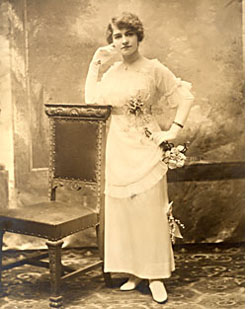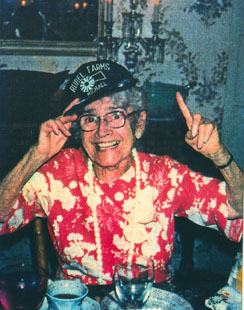Odo B. Stade, 1892-1976— A Life of Dedicated Service
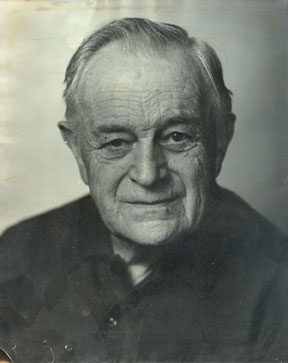 Glendora
resident and renown scholar, Odo B. Stade's life included a career as Navy
lieutenant, charge d'affaires in Mexico, author, poet, actor, stunt pilot,
manager and owner of the Hollywood Bookstore, teacher and world traveler.
His challenging
and rewarding life brought him in contact with many parts of the world,
many professions and people from all walks of life.
Glendora
resident and renown scholar, Odo B. Stade's life included a career as Navy
lieutenant, charge d'affaires in Mexico, author, poet, actor, stunt pilot,
manager and owner of the Hollywood Bookstore, teacher and world traveler.
His challenging
and rewarding life brought him in contact with many parts of the world,
many professions and people from all walks of life.
Born July 2, 1892, in Krautheim, Germany (now St. Louis, Alsace, France), he was the first of eight children of one of the oldest family clans (Stade ab Palffy*) in Hungary. As a child Odo spent six months in Strassburg, and the other six months in the family country place at Trentschen Teplitz, Hungary. There was a great estate in Hungary; a hunting lodge in the Tartara Mountains (The Russians took it after W.W.II) There was a tremendous stand of virgin forest. The place in Budapest was 600 years old, and the family had a little palace in Vienna. Odo was given instruction by a tutor who remained with him until he was ready to go to the University where he majored in philology.
Odo graduated "cum laude" when only fifteen and was able to join the Naval Academy in 1907 at Pola. During these years and the subsequent years as Naval lieutenant, he saw much of the world, including North and South America.
Following his uncle's wish, he resigned from the Navy in 1912 and joined the Austro-Hungarian Foreign Office. At the end of November 1912, Odo received orders to leave for Mexico as charge d'affaires. The Austrian Minister had been absent from Mexico City since early in 1910 and Odo had the ungrateful task of creating order out of chaos, a condition aggravated by the revolution in that unhappy country.
Having seen the peon system in Hungary, he believed it was even worse in Mexico. Sympathizing with the commoner, Odo was against Huerta, the new dictator, so he joined the opposition, Francisco (Pancho) Villa, the underdog. Now employed by the international cartel, French-owned International Company of Mines and Exploration, Odo entered into an agreement with Villa: if Villa permitted his gold shipments to leave the troubled country, Odo would represent Villa in securing munitions and supplies for the rebel forces.
As Villa's purchasing agent charged with developing an air force, his job sent him back and forth across the border to purchase guns, ammunition, and all the material essentials for Villa's soldiers, horses, and vehicles. Odo managed to ship $14 million in gold bullion from the country before he had to leave Mexico. During this time he met most of the leaders and generals, among them Carranza, Felipe Angeles, Governor Jesus Maria Maytorena, &c. and made numerous trips to Washington to consult with Ambassador Dumba. President Wilson personally consulted with Odo during some of these trips to learn about the progress of Villa.
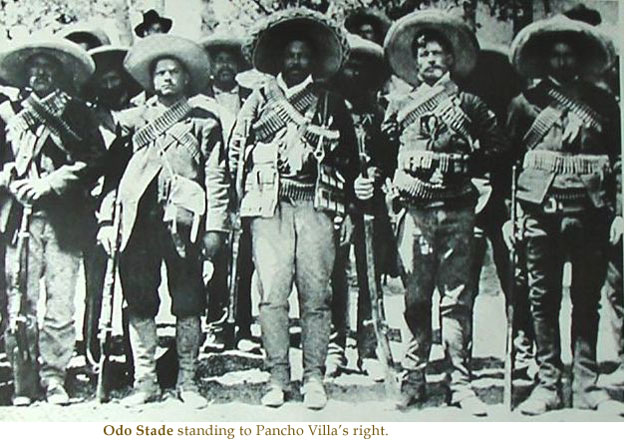
Odo was wounded twice, and once had his knee shot to pieces. Before the revolution was over, he left Mexico, suffering from typhoid malaria and in a desperate physical condition. Illness and wounds forced Odo to go to California in order to regain his health. It was during this last escape to California that Odo brought with him many of Villa's personal effects, including a pair of boots, saddle, rifle, and Colt revolver, which he gave to young Michael Rubel in the 1960s.
Upon arriving in California, Odo called on Mr. Adam Clark Vroman, famous photographer and prominent bookseller of Pasadena, California. Mr. Vroman offered to employ him as a clerk in his store. Odo accepted the kind offer and remained with Mr. Vroman for some six months, when he was forced to quit his job by his lingering illness.
His doctor recommended living in the wild, so in May of 1916 Odo hiked to Tahoe and on to the High Sierras where he lived off the land for six months. He had weighed only 108 pounds when he left for the mountains, and when he came back, he weighed 174. During this phase he helped establish the altitudes of many of the Sierra peaks.
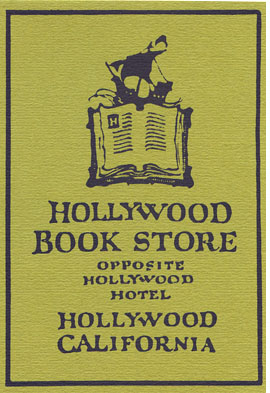 Upon
his return from the Sierras Odo accepted, encouraged by Mr. Vroman, the
managership of the Hollywood Bookstore, then owned by Mr. Frederick G.
Leonard. At that time, Hollywood was still a small town and the motion
picture industry in its infancy. The social life centered around the Hollywood
Hotel and the cultural life around the bookstore and small library across
the street. Odo was the first to write book reviews for the recently founded "Holly Leaves," a
magazine printing motion picture news, social news and the life of the
community as a whole.
Upon
his return from the Sierras Odo accepted, encouraged by Mr. Vroman, the
managership of the Hollywood Bookstore, then owned by Mr. Frederick G.
Leonard. At that time, Hollywood was still a small town and the motion
picture industry in its infancy. The social life centered around the Hollywood
Hotel and the cultural life around the bookstore and small library across
the street. Odo was the first to write book reviews for the recently founded "Holly Leaves," a
magazine printing motion picture news, social news and the life of the
community as a whole.
1915 was also the year Odo first visited Glendora, which was "back country." Michigan Avenue (now Glendora Ave.) was the only oiled street in town. At this time Odo visited the ranger station. Head ranger Sloan was planting trees at the time, and Odo planted a pine near the station. The ranger station still stands as a residence and the Torrey Pine Odo planted was, in 1957, recognized as the second largest Torrey Pine in California. You can hear him speak about his early days in Glendora in the 20-minute recording at the end of this essay.
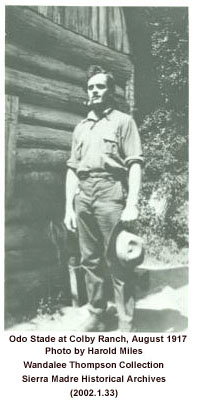 By 1919 the motion picture industry was coming
into its own. European talent, displaced by the war and its aftermath,
saw Hollywood as a Mecca and writers, actors, and directors came in ever
increasing numbers, all of them discovering the Hollywood Bookstore sooner
or later, and Odo, the bookseller and linguist came into his own. He also
had bit acting parts in numerous silent films, including "Blind Husband," "Miracle Man," "World and Its Woman," and "The Right to Happiness." With
training from aerial pioneer Dick Grace, Odo also became a movie stunt
pilot and wing walker, defying death as he flew in W.W. I aerial combat
scenes for Lasky movies and propaganda films.
By 1919 the motion picture industry was coming
into its own. European talent, displaced by the war and its aftermath,
saw Hollywood as a Mecca and writers, actors, and directors came in ever
increasing numbers, all of them discovering the Hollywood Bookstore sooner
or later, and Odo, the bookseller and linguist came into his own. He also
had bit acting parts in numerous silent films, including "Blind Husband," "Miracle Man," "World and Its Woman," and "The Right to Happiness." With
training from aerial pioneer Dick Grace, Odo also became a movie stunt
pilot and wing walker, defying death as he flew in W.W. I aerial combat
scenes for Lasky movies and propaganda films.
By 1920 French, German, Italian and Spanish books had to be added to the stock of books and it presently became necessary to move the store to larger quarters. At the sale time, Mr. Leonard purchased the Loftus Art Shop and combined it with the bookstore. Both stores grew rapidly with booming Hollywood. Greater and greater demands were made upon Odo and his staff and frequently Odo was approached by the diverse studios to assist in research. His establishment soon became known as one of the leading bookstores of the Pacific Coast, and Odo Stade the resident expert. He encouraged competition, helped Unity Peque and Jake Zeitlin to start stored of their own by giving them stock and time. He did in Hollywood what Mr. Vroman had done in Pasadena.
 In 1923, Odo, hitherto a confirmed bachelor, met Maria
Engel†, who had come that year as assistant to Howard Greer, the designer, under contract to Famous Players-La ski Studios. It was love at first sight. The same studio gave Odo the commission in 1924 to obtain research in Hollywood and its Long Island Studios. This trip took Odo through most of the European countries and confirmed him in his opinion that his life was to be in the United States henceforth, especially since his uncle strenuously objected to his marrying a commoner. This break was never healed, Odo was cut off from his family and gladly returned to Hollywood in October 1924. A few days after his return, he married Maria Engel, who left her lucrative position with the studio to assist him by taking charge of the Hollywood Art Shop, where she achieved in a short while the same success as he had done with the bookstore.
In 1923, Odo, hitherto a confirmed bachelor, met Maria
Engel†, who had come that year as assistant to Howard Greer, the designer, under contract to Famous Players-La ski Studios. It was love at first sight. The same studio gave Odo the commission in 1924 to obtain research in Hollywood and its Long Island Studios. This trip took Odo through most of the European countries and confirmed him in his opinion that his life was to be in the United States henceforth, especially since his uncle strenuously objected to his marrying a commoner. This break was never healed, Odo was cut off from his family and gladly returned to Hollywood in October 1924. A few days after his return, he married Maria Engel, who left her lucrative position with the studio to assist him by taking charge of the Hollywood Art Shop, where she achieved in a short while the same success as he had done with the bookstore.
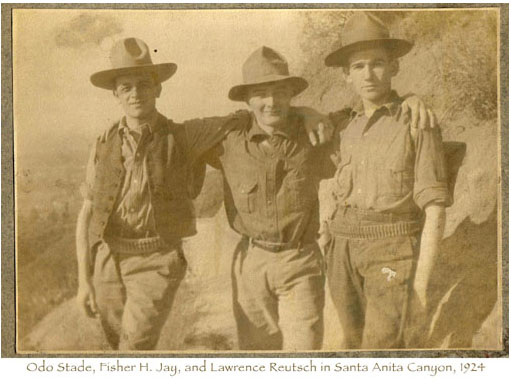 In March 1925, Frederick G. Leonard sold his interests in both stores to Maria and Odo Stade and Robert and Emma Holmes; the latter the two silent partners. That year the store had to be enlarged once more and presently a rare book section was added. By this time, the Hollywood Bookstore had become known from coast to coast. Those were busy years for Maria and Odo; the sales in both departments reached the half million mark by 1928. When in 1930 the Booksellers' Convention was held in Los Angeles, Odo was chosen Bookseller of the Pacific Coast.
In March 1925, Frederick G. Leonard sold his interests in both stores to Maria and Odo Stade and Robert and Emma Holmes; the latter the two silent partners. That year the store had to be enlarged once more and presently a rare book section was added. By this time, the Hollywood Bookstore had become known from coast to coast. Those were busy years for Maria and Odo; the sales in both departments reached the half million mark by 1928. When in 1930 the Booksellers' Convention was held in Los Angeles, Odo was chosen Bookseller of the Pacific Coast.
The stock market debacle of 1929 was a serious set-back, but by cutting corners and careful management Odo and Maria weathered the storm. However the hoped for recovery did not come and in 1932, when economical conditions were going from bad to worse, Emma Holmes, the silent partner and majority stockholder, forced the Stades to sell their interests to her at a considerable sacrifice to them. With Odo out of the store, the Hollywood Bookstore did not outlast the change very long.
After a long rest at the Loomis Ranch, the Stade's took up residence in Topanga, where Odo began writing again, encouraged by early successes in 1919, at which time he had sold numerous short stories and epigrams to H.L. Mencken, then editor of "Smart Set Magazine." During the next ten years Odo wrote numerous short stories, novelettes, two novels and, in collaboration with Edgecumb Pinchon, the biography "Viva Villa," which was sold to the MGM Studios, and as a motion picture achieved a considerable success, being nominated for Best Picture in the Academy Awards in 1935, and earning $17 million for MGM by the late 1950s.
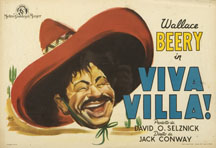 In 1942 Odo answered President Roosevelt's
appeal for all able bodied men to do their share in the war. He applied
to the
U.S. Navy, but was rejected on account of the wounds sustained with Pancho
Villa. Odo next applied to the U.S. Forest Service, and in 1943 was given
the position of District Dispatcher, Mt. Baldy District, Angeles National
Forest. He resigned from the Forest Service in 1958 after fifteen years
of dedicated service. During these years he was involved with several youth
groups helping to "train youth to live." In 1963 he was elected "Outstanding
Educator" by
the students of Brown's Military Academy where he taught modern languages.
In 1942 Odo answered President Roosevelt's
appeal for all able bodied men to do their share in the war. He applied
to the
U.S. Navy, but was rejected on account of the wounds sustained with Pancho
Villa. Odo next applied to the U.S. Forest Service, and in 1943 was given
the position of District Dispatcher, Mt. Baldy District, Angeles National
Forest. He resigned from the Forest Service in 1958 after fifteen years
of dedicated service. During these years he was involved with several youth
groups helping to "train youth to live." In 1963 he was elected "Outstanding
Educator" by
the students of Brown's Military Academy where he taught modern languages.
Mr. Stade was honored by the citizens of Glendora who voted him Citizen of the Year in 1956 for his outstanding contributions to all the people of the San Gabriel Valley area. He and his wife Maria also served throughout the 1950s and -60s on various committees and the San Gabriel Valley Symphony Association.
In the 1960s and 70s Odo served on the Board of Trustees of the Francis Bacon Library and Foundation. Fluent in many langsuages with a broad knowledge on history and literature, he translated many literary works and won a reputation as outstanding scholar.
Odo B. Stade lived a life of dedicated service, committed to helping others, especially young people. Chris and Michael Rubel, and later Scott and Clarke Rubel, are four youths who benefitted from Odo's friendship and generosity of spirit. In fact as a child Michael didn’t appreciate school much and often wanted to skip it. Of course his mother would not approve of his playing hookey. If, however, Michael said he wanted to spend the day with Odo rather than go to school, his mother said, “Well you’ll probably learn more from him than you will in school, so go ahead.” Odo and Maria would host Scott and Clarke at their home nearly every day during much of the 1960s, reading or discussing books and philosophy and teaching them all their young brains could absorb (when they really went over for the cookies). Odo taught Scott, as a teenager, the tricks of fast-draw with a six-shooter in the big back yard of Leadora Avenue.
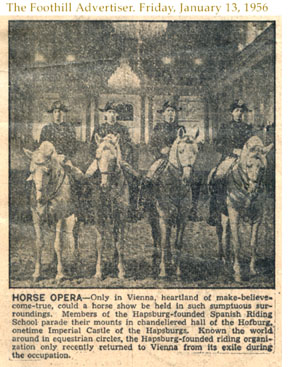 *Palffy
was the family name on Odo's grandmother's side. She was a good friend
of the Empress Elizabeth. Grandmother Palffy played duets with Liszt. Odo's
known family history goes back to 896. His paternal grandmother was a von
Scheele. She was educated mainly in England. It was her brother who in
1866 took the blind King from Hanover to Vienna on horseback to save his
life, when Hanover ceased to be a kingdom. After this feat of bravery,
this brother was made a director of the Spanish Riding Institute, which
still exists. They ride their mounts in chandeliered halls of the Hofburg,
one time Imperial Castle of the Hapsburg's. It was exiled during the occupation,
and only recently returned to Vienna. Odo's father was a friend of his
uncle (mother's brother), and in 1874, he went to see him at the riding
school, and there he met Ilka ab Palffy, in 1874. They were married in
1887.
*Palffy
was the family name on Odo's grandmother's side. She was a good friend
of the Empress Elizabeth. Grandmother Palffy played duets with Liszt. Odo's
known family history goes back to 896. His paternal grandmother was a von
Scheele. She was educated mainly in England. It was her brother who in
1866 took the blind King from Hanover to Vienna on horseback to save his
life, when Hanover ceased to be a kingdom. After this feat of bravery,
this brother was made a director of the Spanish Riding Institute, which
still exists. They ride their mounts in chandeliered halls of the Hofburg,
one time Imperial Castle of the Hapsburg's. It was exiled during the occupation,
and only recently returned to Vienna. Odo's father was a friend of his
uncle (mother's brother), and in 1874, he went to see him at the riding
school, and there he met Ilka ab Palffy, in 1874. They were married in
1887.
Odo's mother was Hungarian. The family name was Szechenye. His father was Norwegian, Flemish and French, and his name was De Stade. He was a surgeon, and worked on the development and perfection of twilight sleep. Odo's mother thus married a commoner...a surgeon, and the family cut her off.
When the first son (Odo) was born, the uncle brought the family together, and Odo was designated to take on the name of Palffy when he became of age. This is why he spent six months in Hungary each year, learning the ancestral traditions and the family ways.
The De Stade family was musical. One sister played the viola. Odo's mother played the piano beautifully and sang. Odo played the violin, and played in symphony concerts before he was sixteen.
Odo wanted to become a doctor, but his father objected. At the age of 14, Odo recalls that he assisted his father in an emergency operation, after being awakened in the night. During the last ten years of his life, Odo's father was the court surgeon. He died at the age of 58 on a visit to his sister's home in Brazil.
 † At Hickson's
in New York City, Maria Engel (May 14, 1894-June 14, 1990) worked in the
field of fashion, and became associated with Howard Greer, a dress designer.
Together they
did
the 1922
Greenwich Village Follies, and they were engaged by Famous Players-Lasky
Studio in Hollywood. They went back to another Greenwich Village Follies,
1923 Edition, and returned to Lasky's. It was during this time she first
met Greenwich Village dancers Dorothy & Eleanor
Deuel, which proved a valuable contact later in the 1940's when Odo and
Maria built their beautifully simple, modern home in the back lot of Heinz
and Dorothy Rubel's property at 861 Leadora Avenue.
† At Hickson's
in New York City, Maria Engel (May 14, 1894-June 14, 1990) worked in the
field of fashion, and became associated with Howard Greer, a dress designer.
Together they
did
the 1922
Greenwich Village Follies, and they were engaged by Famous Players-Lasky
Studio in Hollywood. They went back to another Greenwich Village Follies,
1923 Edition, and returned to Lasky's. It was during this time she first
met Greenwich Village dancers Dorothy & Eleanor
Deuel, which proved a valuable contact later in the 1940's when Odo and
Maria built their beautifully simple, modern home in the back lot of Heinz
and Dorothy Rubel's property at 861 Leadora Avenue.
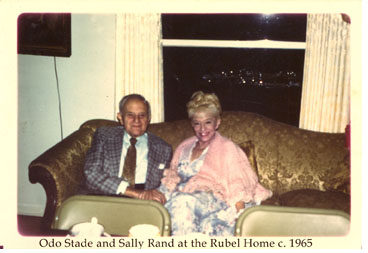 One evening early in 1924, Maria went to the Hollywood Bookstore. As she reached the door, the proprietor was locking it up. However, to be accommodating, he went back in to get the book she wanted. She ordered some German books also. Odo went off to the mountains and three weeks later had the books delivered with a note, asking if he might call.
One evening early in 1924, Maria went to the Hollywood Bookstore. As she reached the door, the proprietor was locking it up. However, to be accommodating, he went back in to get the book she wanted. She ordered some German books also. Odo went off to the mountains and three weeks later had the books delivered with a note, asking if he might call.
After their marriage, Maria continued with her career in design. Her knowledge of clothes, millinery and design have remained a primary interest, and she has reached a highly deserved pinnacle teaching and creating in adult education classes in Glendora where she lived through the 1980s.
When she and Odo were first married, his uncle wanted him to return to Hungary, but Maria felt within herself that she would never be accepted by the royal family or the peasants.
Maria spent the 80s holding discussion and reading groups in her home, with a focus on the spiritual world and the world's religions, diverging into aspects of living with ghosts and her own belief in astral projection. She was an enthusiast of the writings of Max Freedom Long, and gave Scott Rubel her first edition set based on the "Secret Science Behind Miracles," a riveting document of the last years of the Kahunas on the Hawaiian Islands, including the inner workings of their magic and religion. This and many other literary gifts from Maria encouraged Scott's interest in books and greatly expanded his collection of first editions at the time.
The rest of Odo's collection of first editions was a donation to the library at Azusa Pacific, and the collection is still known today as the Odo B. Stade Collection.
In April of 2015, Joshua Blu Buhs published an in depth challenge to the timeline and some of the assertions made in this biography. It is n worthwhile read speculating on Odo Stade as a Fortean. This essay was pieced together by Scott Rubel using personal memories to string together a narrative from the various sources of folklore, family hearsay, and publications and contemporary newspaper articles. As possibly the youngest person to remember Odo in a meaningful way, it was Mr. Rubel's intent to make this information available, imperfect as it is, with the intention that he or anyone else may want to further study Odo Stade's life and try to sort out the timeline of events, which is flawed as presented here.
Hear Odo's voice from a 1959 account of his life in Glendora, delivered to a meeting of the Glendora Historical Society ca. 1959. Click on the sound bar below. This recording, along with others of the Glendora pioneers, was saved from oblivion by Layne Staral, through whose astute care and energy we can now hear them digitally.
Further, anecdotal notes on Odo Stade
TOP | HOME | Film
Your Movie at Rubel Pharms | More on Sally Rand | Wikipedia
Scott Rubel, Pagemaster
